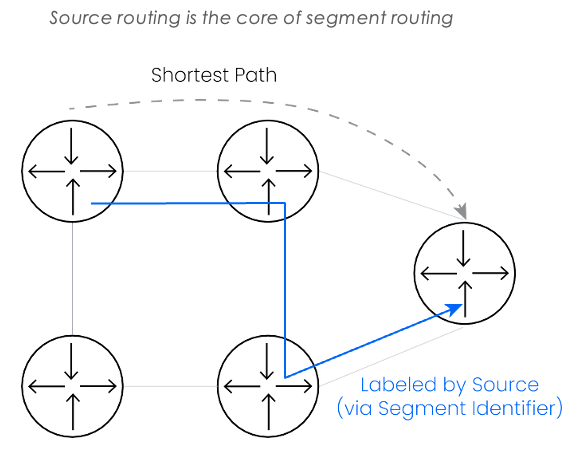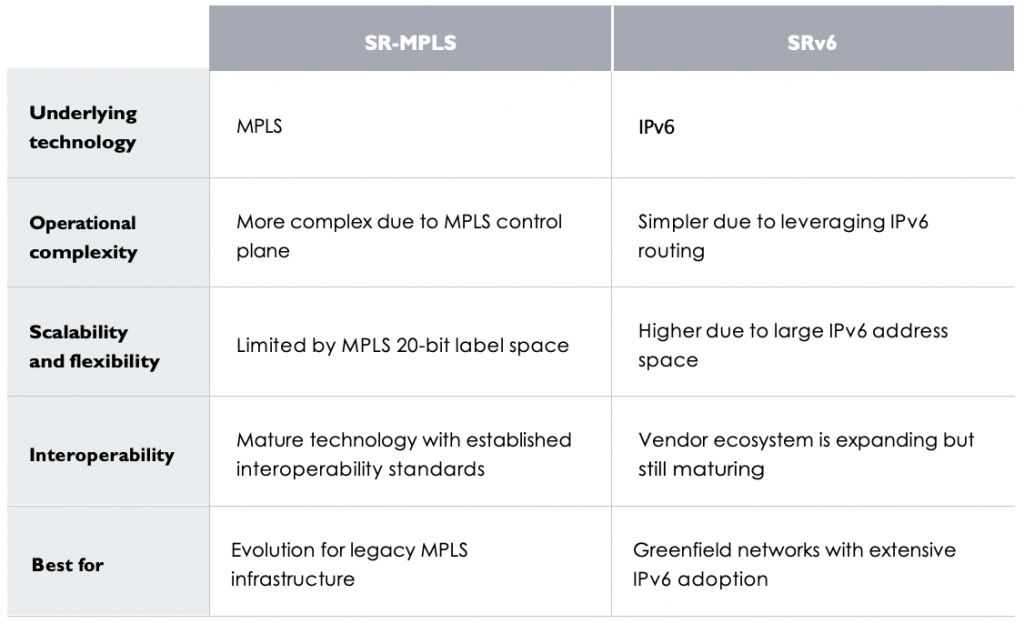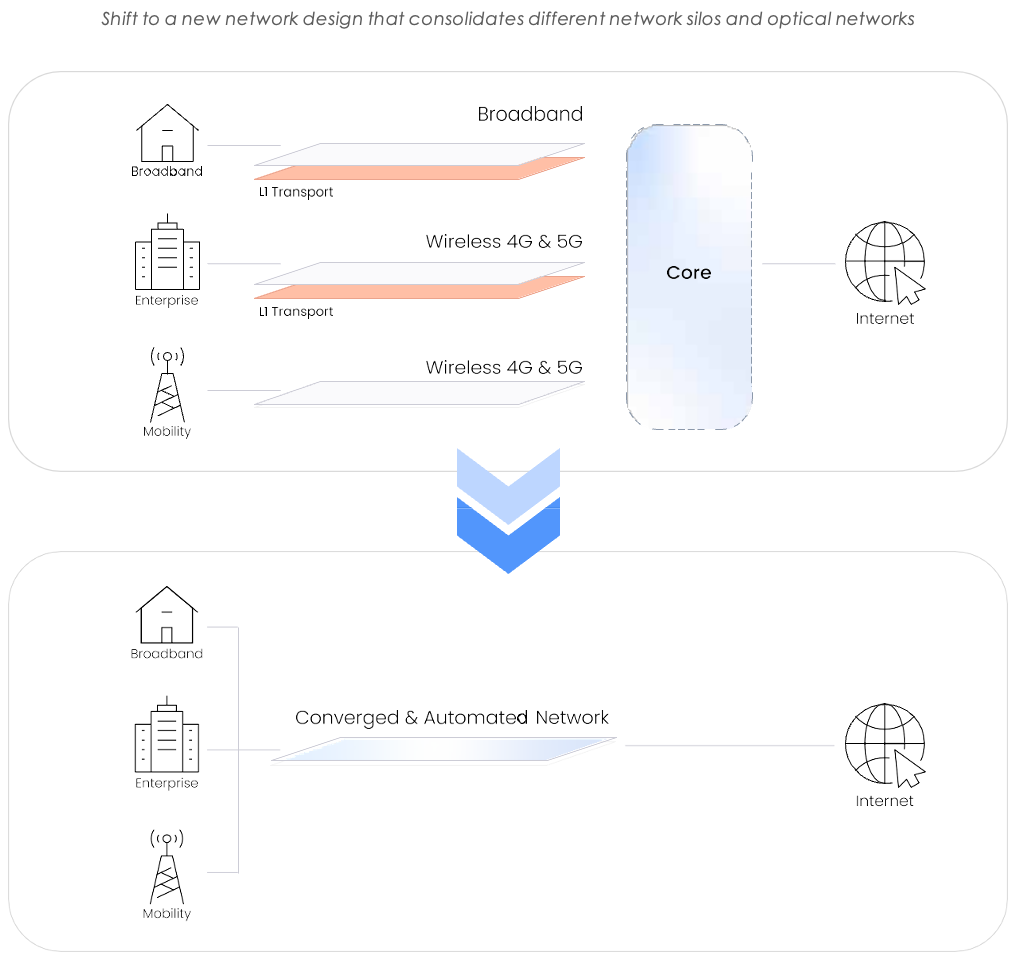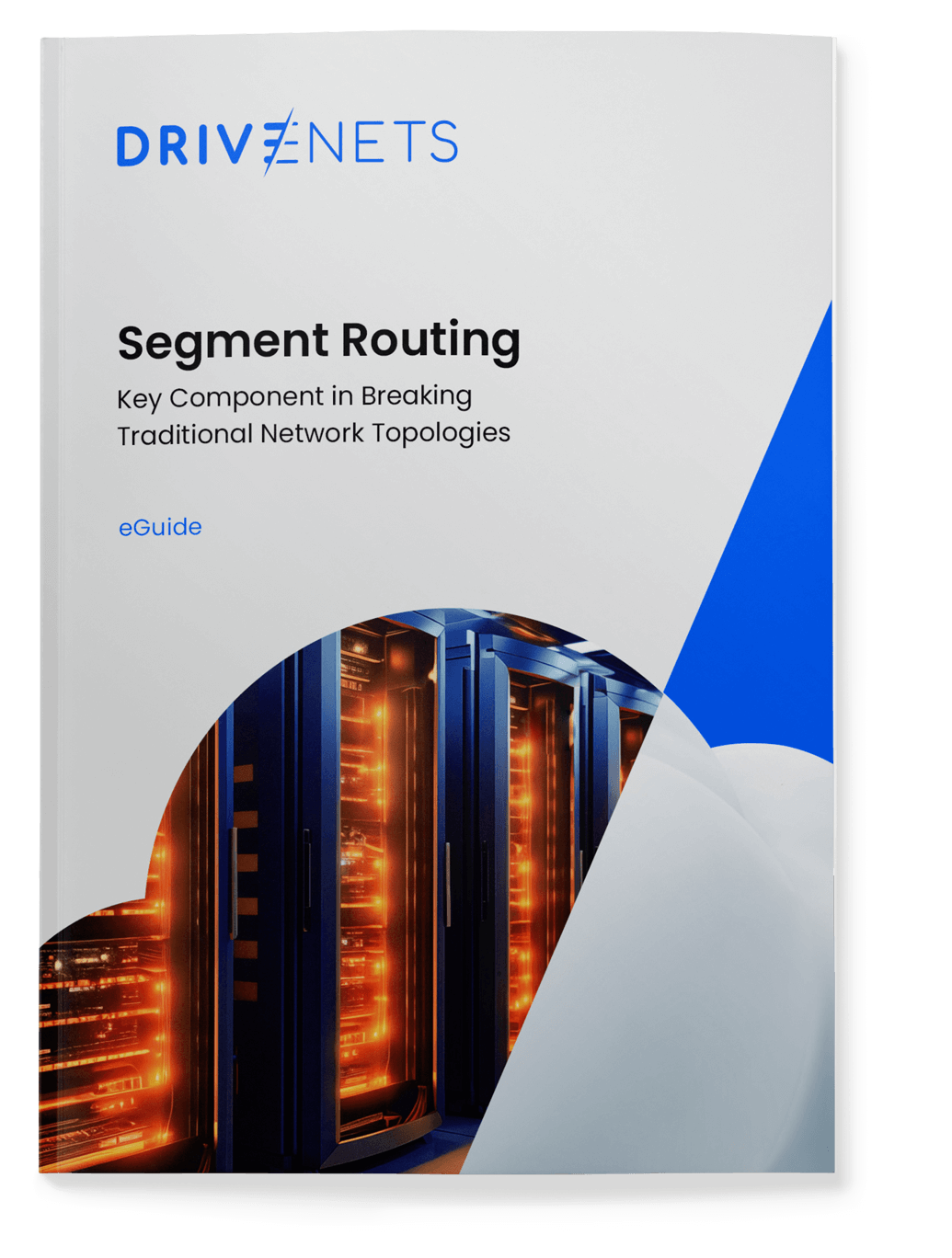Segment Routing: Enhancing scalability and flexibility
The growing complexity of maintaining large-scale networks is likely the top challenge service providers (SPs) are facing today. SPs are juggling too many service-specific hardware boxes from a limited selection
of vendors, all while pushing increasing traffic through this patchwork infrastructure using outdated traffic engineering protocols.
As a result, SPs face:
- increasing network complexity and growing troubleshooting efforts
- scalability limitations due to inflexibility (static paths, slow convergence)
- interoperability issues due to vendor lock-in
The need to mitigate these operational challenges has driven SPs to consider consolidating some applications
and services while also modernizing their networks using more advanced traffic engineering techniques –
such as segment routing.
What is segment routing and how does it work?
Traditional Multiprotocol Label Switching (MPLS) protocols have effectively managed multiple services and supported diverse virtual private networks (VPNs) in large-scale networks for years. This technique operates
by creating virtual connections marked by labels and usually leverages the Shortest Path First (SPF) protocol to calculate the best path for data traffic. However, the protocol evolution introduced added complexity, contrary to its original purpose. This complexity escalated with network growth due to the required state synchronization across MPLS nodes. It became clear that continuing with destination-based routing protocols like MPLS was unsustainable.
Standardized by the IETF and based on a concept introduced by Cisco in 2011, segment routing (SR) has been widely adopted by network operators and major vendors. SR shifts to a source routing paradigm, where data packets carry explicit routing information. Instead of relying on static, complex paths, SR divides the network into segments represented by segment identifiers (SIDs). A collection of SIDs, imposed on the packet at the head-end of the network, can “steer” the packet through the network based upon a pre-defined policy (rather than a simple shortest-path calculation).

How segment routing solves service provider challenges
Segment routing was designed to address the operational challenges faced by service providers when maintaining large-scale networks:
- Reducing operational complexity: Segment routing reduces operational complexity by leveraging source routing and shifting the control plane and path calculation to Open Shortest Path First (OSPF) and Intermediate System to Intermediate System (IS-IS) protocols. This allows for dynamic path adjustments as well as simplified traffic policies and setup processes. As a result, traffic engineering and network planning configurations are reduced to a minimum, and troubleshooting and failures
are mitigated faster. - Enhancing scalability and flexibility: SR enhances scalability and flexibility by eliminating unnecessary signaling overhead (e.g., RSVP-TE) and the need for complex configurations as the network scales. The dynamic nature of path changes and simplified traffic policies make it easier to expand the network without adding more work.
- Improving interoperability and avoiding vendor lock-in: By separating the control plane from the data plane, segment routing allows for greater flexibility in choosing hardware and software components from different vendors. Moreover, since segment routing is based on standardized protocols, it promotes shorter integration phases when deploying new vendor solutions.
SRv6 and SR-MPLS implementation methods
SR’s ability to deliver more efficient and flexible routing techniques for addressing the growing complexity of maintaining large-scale networks is the primary reason for its rapid adoption among SPs.
There are two primary implementation methods for segment routing:
- SR-MPLS: SR-MPLS uses traditional MPLS labels to carry SR segment identifiers to different network nodes. This switch from destination routing to source routing eliminates the need for complex MPLS control protocols (e.g., LDP and RSVP-TE) and and their associated signaling and configuration overhead. SR-MPLS maintains SR’s simplicity while leveraging existing MPLS deployments, making it a natural evolution for many service providers.
- SRv6: SRv6 uses the existing IPv6 protocol stack to encode segment information in the IPv6 header. This protocol flavor offers significant benefits but also presents great challenges. On one hand, networks already operating on IPv6 can capitalize on SRv6’s simplified traffic engineering, vast address space, and welcome opportunity to integrate the attractive network programmability function into the architecture. However, SRv6 requires SPs to enable IPv6 across their entire network, which can be complex for service providers. Additionally, migrating legacy IPv4 services to SRv6 can be time consuming, even with automation. Practically, Sv6 is more suitable for greenfield networks, cloud data centers and 5G networks, where extensive IPv6 adoption is more feasible.

One important aspect of segment routing is the issue of control – both SR-MPLS and SRv6 can be implemented using either a distributed or centralized approach. SR-MPLS typically leans towards a distributed approach due to MPLS’ inherent distributed nature. SRv6 offers more flexibility, allowing both distributed and centralized models. While centralized controllers provide more granular management over policies, they add more complexity to network management and scaling. The choice depends on network scale, complexity, and the desired level of control by the SP.
Why is segment routing key in transforming legacy networks into converged, software-centric networks?
Today SPs are maintaining separate networks for mobile, broadband, and business services, utilizing tens of platform types and hundreds of components. A shift to a new network design aimed at consolidating different network silos and optical networks will transform the network to an efficient and scalable one like hyperscalers’ networks.

DriveNets Network Cloud assists SPs in transforming their legacy networks into converged, software-centric networks that then can introduce end-to-end automation and artificial intelligence for IT operations (AIOps) on a massive scale.
Segment routing is a key component of this transformation. Its simple yet flexible traffic engineering approach effectively breaks down traditional network silos by providing a common language for all network domains, making it easier to manage large-scale, complex networks.
To achieve DriveNets’ modern network design, three architectural steps are essential:
- Disaggregation: This step empowers a cloud-like architecture, enabling SPs to manage hardware
and software independently as well as mix and match vendors/solutions. - Network convergence: Along with advanced optical methods (like ZR and ZR+) and a unified network
operating system (NOS) powering the same open standard hardware across all network domains, SR
plays a significant role in contributing to network convergence. - Automation: Once a disaggregated and converged network is achieved, embracing automation
and AI solutions such as end-to-end lifecycle automation and root-cause analysis becomes much
more feasible.
Segment routing allows service providers to shift to simpler network operations
Prior to segment routing, MPLS packets were forwarded based on their labels and not their destination addresses. Allowing SPs to shift to simpler network operations, SR is an important element in the journey toward a converged, software-centric network that can address the growing operational efforts of maintaining large-scale networks.
DriveNets Network Cloud, a proven disaggregated networking solution, utilizes segment routing to assist multiple global tier-1 SPs in deploying a more modern, software-centric, and converged network design.







